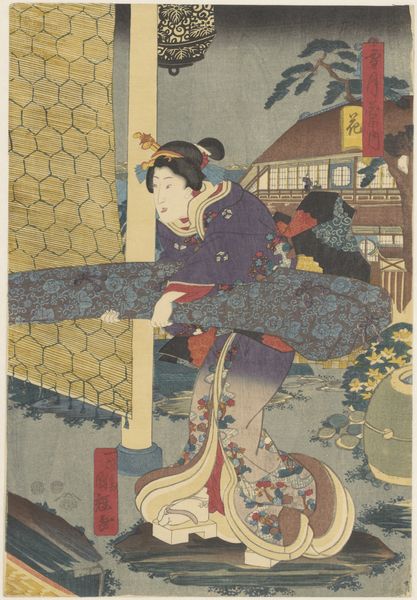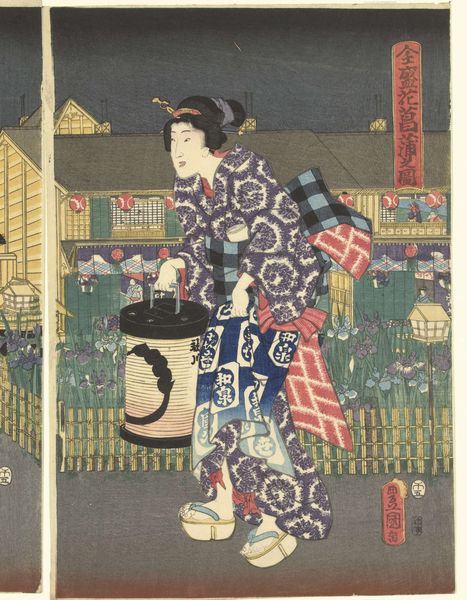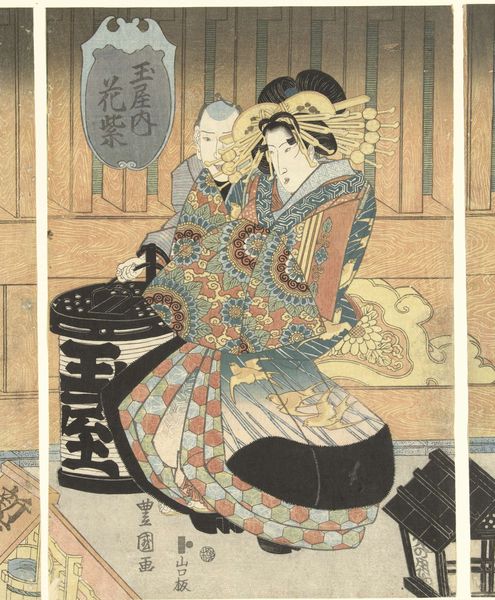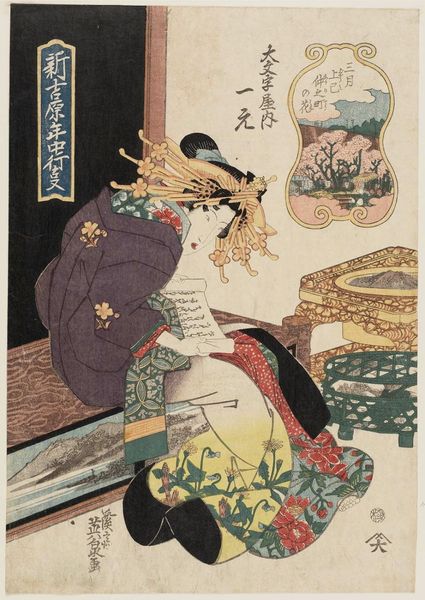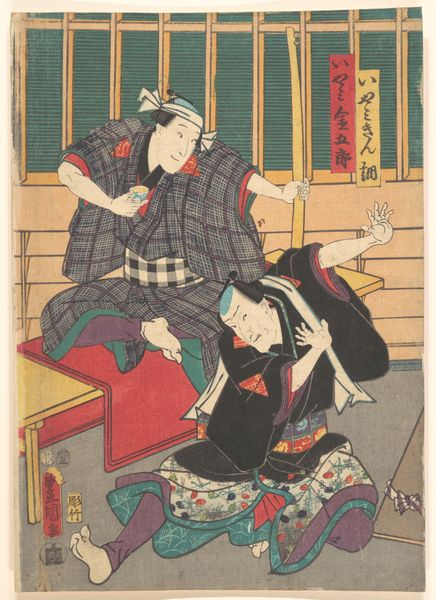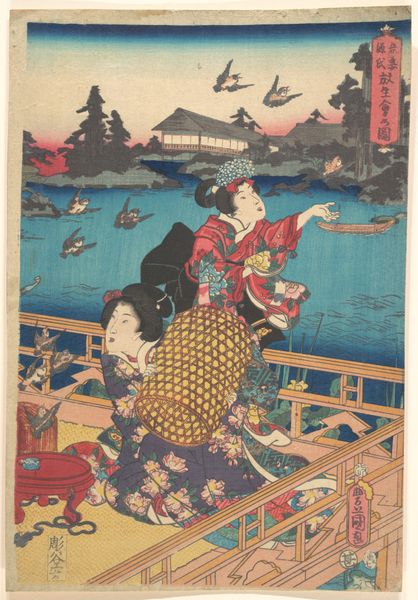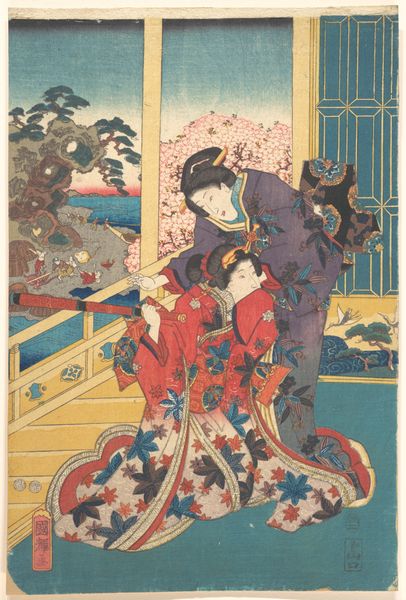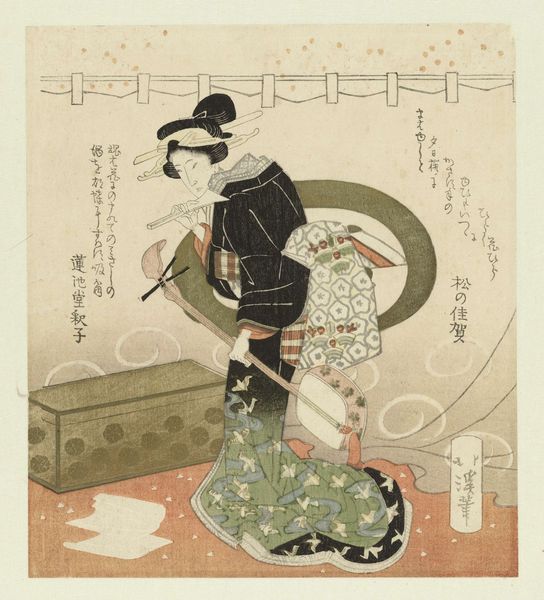
print, woodblock-print
#
portrait
# print
#
asian-art
#
ukiyo-e
#
figuration
#
woodblock-print
#
genre-painting
Dimensions: height 250 mm, width 362 mm
Copyright: Rijks Museum: Open Domain
Curator: There’s something so… knowing in her expression. She seems aware of the layers of artifice surrounding her. Editor: Indeed! Here we have “Vrouwen bij de Ebisuya winkel,” or "Women at the Ebisuya Shop," a woodblock print by Utagawa Kunisada, created around 1842. Kunisada was a leading printmaker of the Utagawa school, known for his portraits of actors and women. This piece currently resides at the Rijksmuseum. Curator: "Portraits of women," but always a little like gazing at a beautiful, elaborate stage set. Her kimono seems to melt into the background of the Ebisuya shop sign. Is that Ebisu himself beaming at us behind her? With the most gleeful face imaginable. Holding a ridiculously huge fish. Editor: Precisely. Ebisu, one of the Seven Gods of Fortune, associated with merchants, prosperity, and abundance. And what appears to be the shop sign is, more likely, an advertisement or banner displayed in front of the Ebisuya shop. These prints often served a dual purpose: art and advertising. Kunisada’s figures and elaborate patterns really capture the late Edo period's emphasis on urban entertainment and commerce. The representation, particularly of women, functioned within complex social structures where artists both reflected and shaped expectations of femininity. Curator: I'm also struck by the flattening of space here. The woman seems almost pasted onto the scene, and this adds to that theatrical sensation I noted earlier. It's not about capturing reality so much as crafting a dream, or a stylized image of desire. The detail on the kimono, though. She may be flat against the shop banner, but her clothing almost moves. I can see and almost touch it. Editor: These ukiyo-e prints became powerful disseminators of fashion and beauty trends across Japanese society. It created aspirational ideas centered on class. How everyday people understood societal elites would have, in part, been dictated by artists like Kunisada. His images of female beauty were consumed widely, and this popularity came from this unique blend of artistry, social commentary, and economic drive. Curator: Looking at this today, knowing all of that adds a curious layer. This is an advertisement within an artwork. Even the seemingly flat space feels packed. I can't help but look at this beauty and this advertisement as intertwined, mutually supporting artifacts that I think also show the economic forces influencing artistic production. And ultimately how artists like Kunisada played with those themes, perhaps self-aware or subtly questioning it. Editor: Indeed. These images weren't passive representations. They were actively involved in shaping tastes, desires, and social values. The very act of creating and displaying these images contributes to the vibrant, dynamic world of Edo period Japan.
Comments
No comments
Be the first to comment and join the conversation on the ultimate creative platform.


